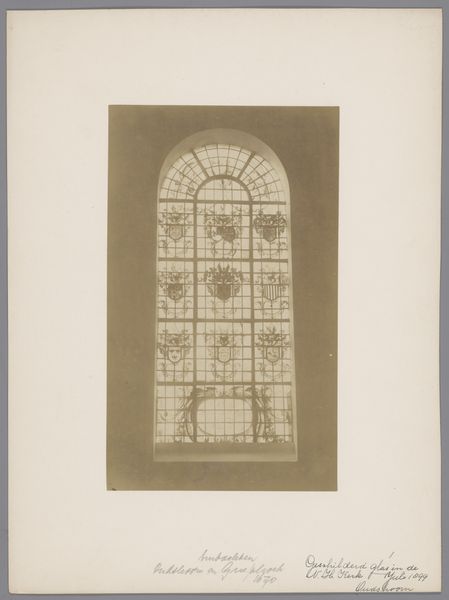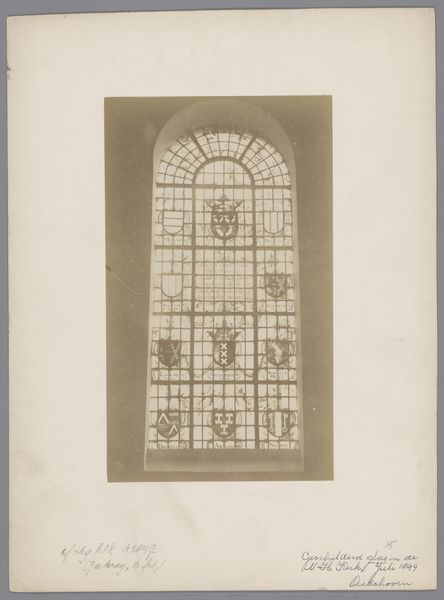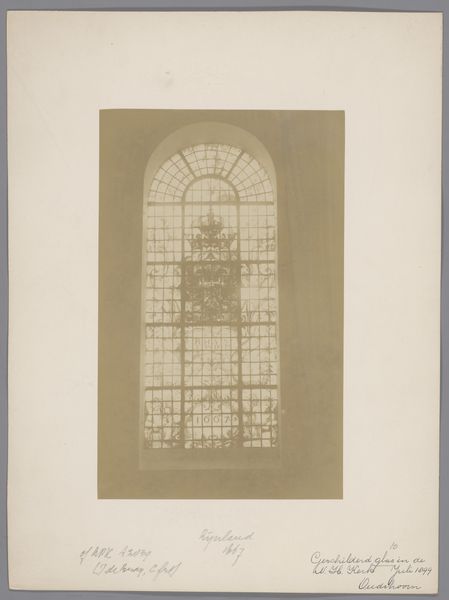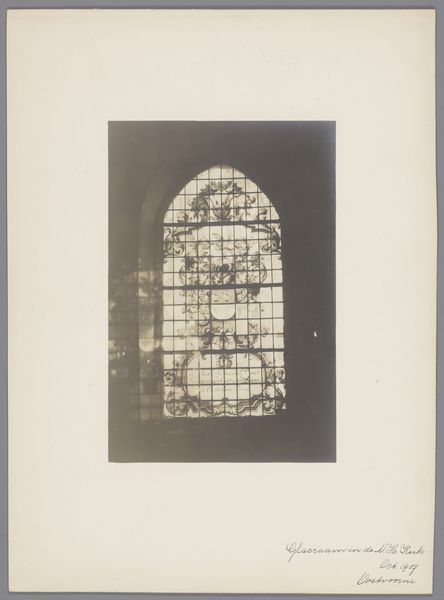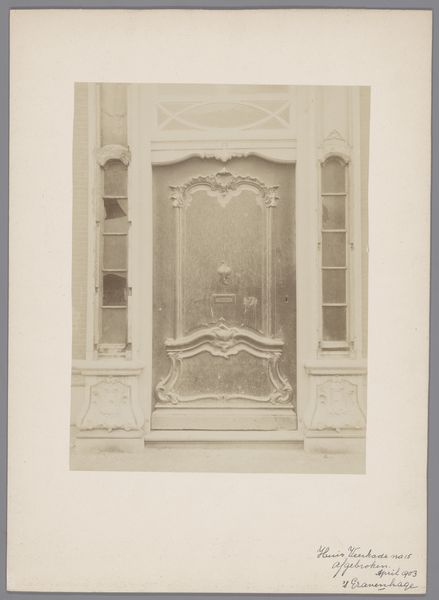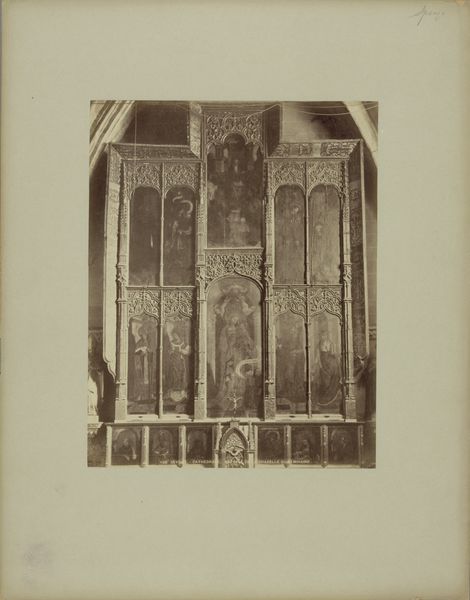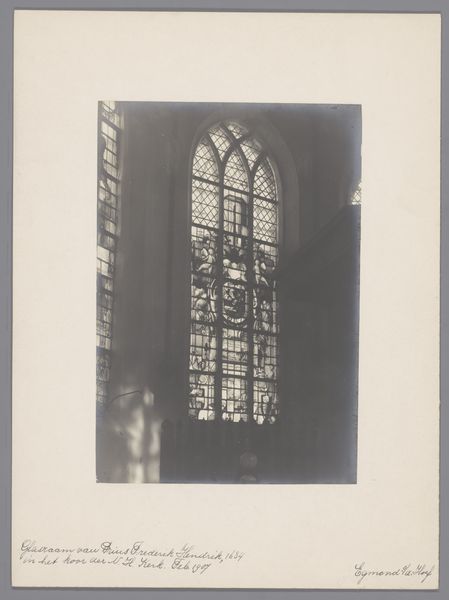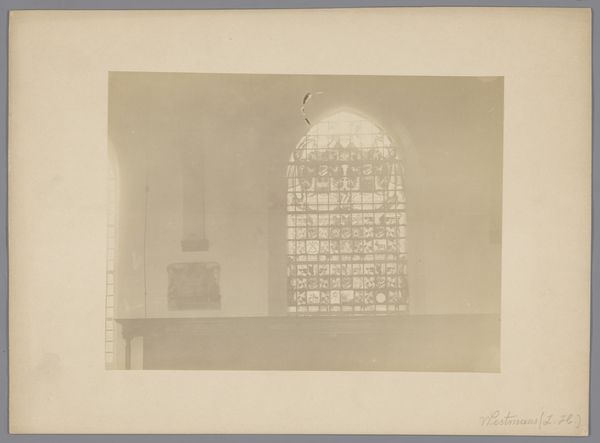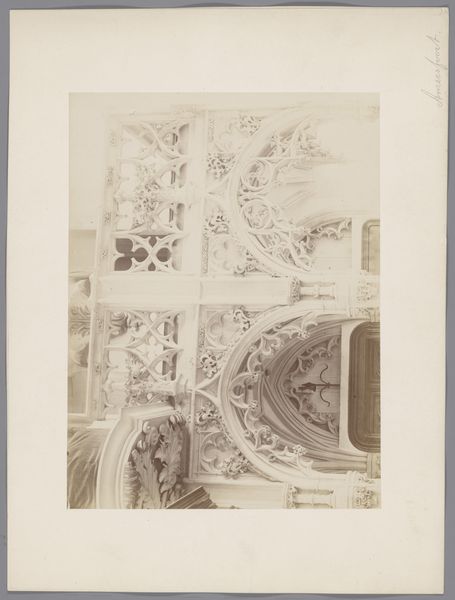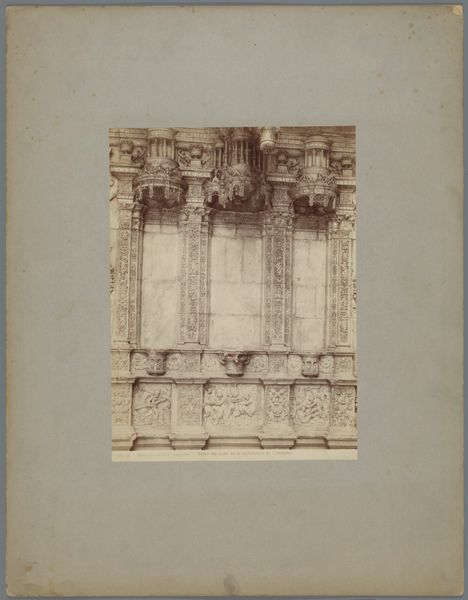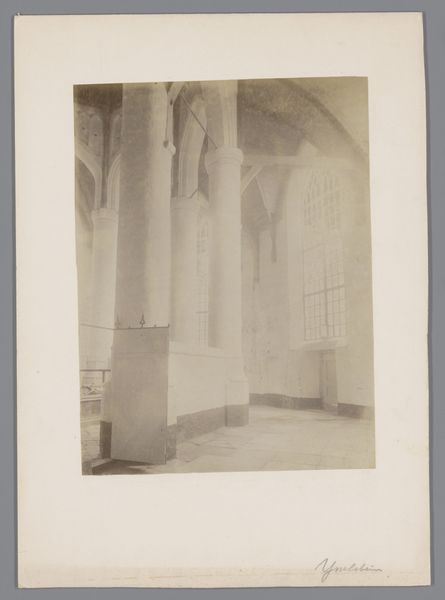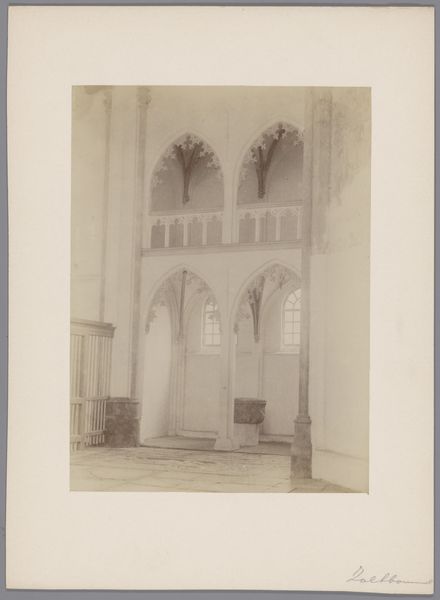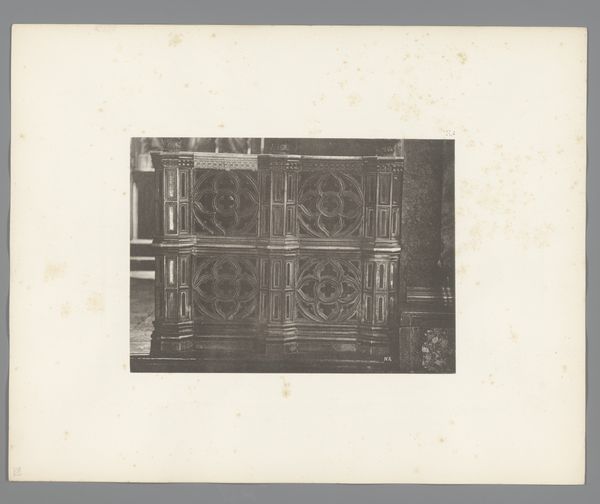
Dimensions: height 226 mm, width 159 mm
Copyright: Rijks Museum: Open Domain
Editor: Here we have an image titled "Geschilderd raam in de Hervormde Kerk te Westmaas", which translates to "Painted window in the Reformed Church at Westmaas," dating from around 1890 to 1920, attributed to an anonymous artist working for Monumentenzorg. The subdued monochrome tones evoke a sense of historical solemnity. How do you interpret this photograph of a stained-glass window? Curator: This photograph offers a fascinating lens through which to examine the relationship between religious institutions, artistic expression, and social power at the turn of the century. Who was commissioning this type of artwork, and what messages were they intending to convey through the imagery in the stained glass? Think about the political and social contexts of the Reformed Church in the Netherlands during this period. Editor: So, beyond just the aesthetics of the window, you're saying it's important to consider the motivations and the societal influence of the patrons. Was stained glass in the Reformed Church potentially making statements about religious authority, class, or even national identity? Curator: Exactly. What stories were the patrons wanting to be told in a time when industrialization was taking hold in many societies? Stained glass windows have often operated as pedagogical tools, instructing the masses through visual narratives and imbuing the space with a sense of divine legitimacy. Who benefits from those narratives, and who might be excluded or marginalized by them? This monochrome photo filters out color – how does this limit or expand its accessibility? Editor: This makes me think about the accessibility of art, and that even its creation or curation, isn't always a neutral process, and can reinforce existing social structures. Curator: Precisely. We need to actively question and unpack the layers of meaning embedded within seemingly simple photographs such as this, seeing how they interact with, and perhaps even perpetuate, power dynamics. Editor: That's a really important way of looking at art; it’s given me a lot to consider about the purpose of religious artwork. Curator: Indeed. Context is essential to understand not just the aesthetic choices, but the societal currents that shaped its creation and legacy.
Comments
No comments
Be the first to comment and join the conversation on the ultimate creative platform.
